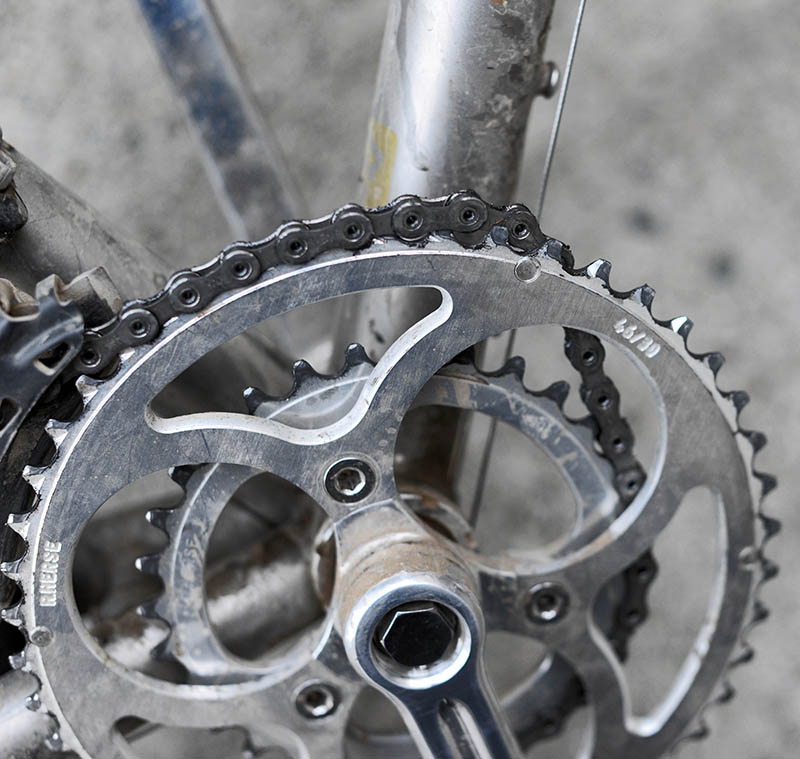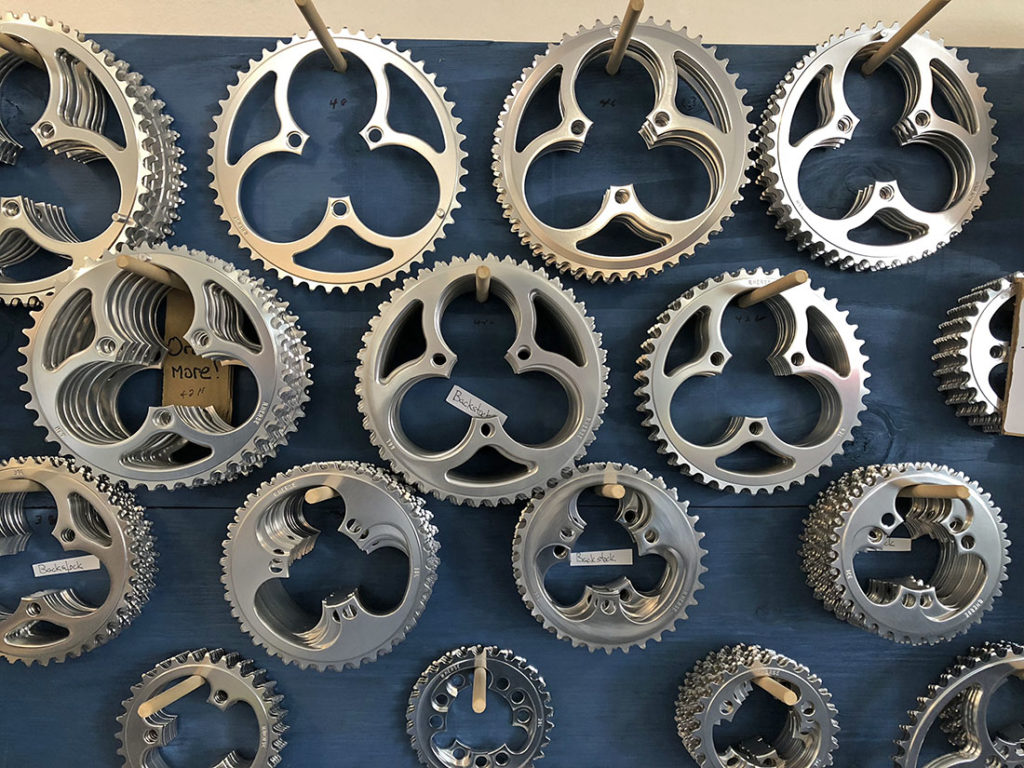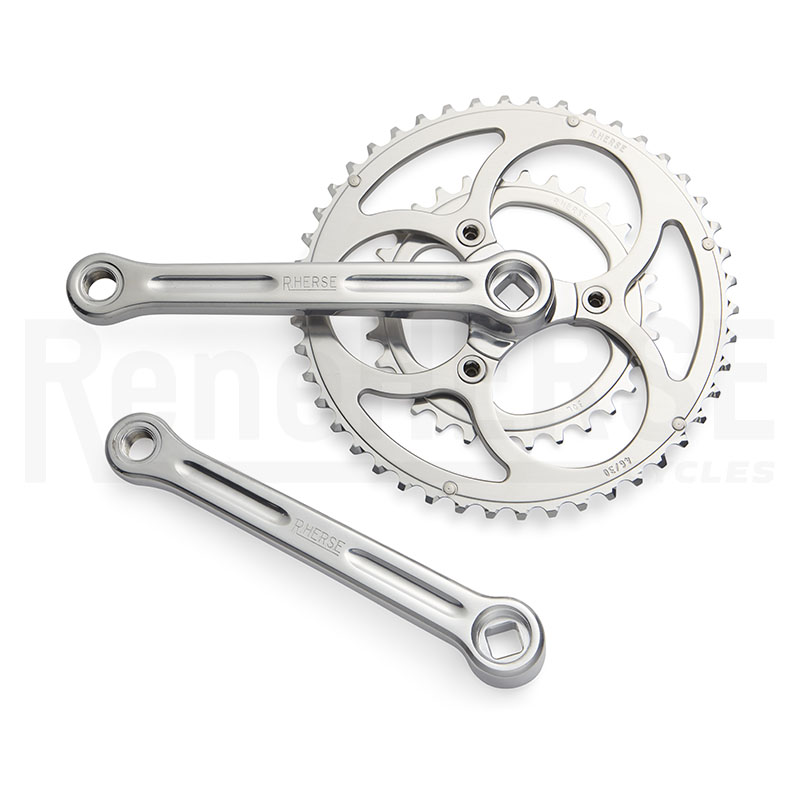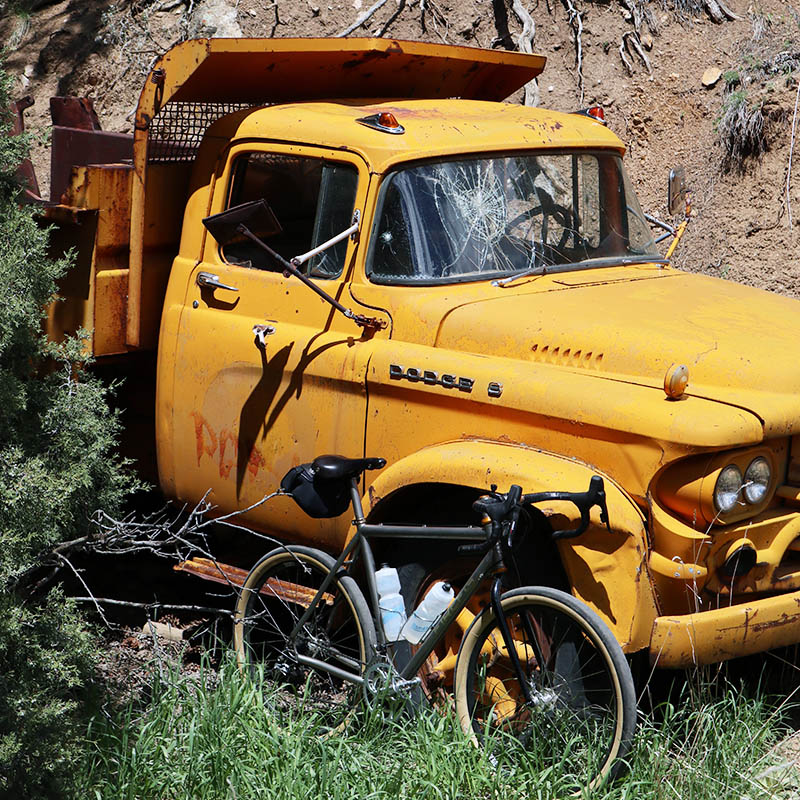12-Speed Rene Herse Cranks

We’re excited to announce that our ramped-and-pinned chainrings are 12-speed compatible. We knew that 12-speed was coming when we developed our 11-speed rings, so we tried to anticipate the requirements, so that our chainrings would be compatible with 12-speed as well.
Now we’ve completed our testing, and we’re happy to report that all our ’11-speed’ chainrings also work well with 12-speed chains.
Developing ‘9- to 12-speed’ chainrings was no small task. To equal the best shifting in the bike business, we put almost two years of R&D into these rings. We tested all modern rings out there, and we found vast differences even among the big makers. To get the best shifting, we modeled the chain paths under dynamic loads (pedaling at 60-130 rpm). We were surprised that most chainrings are designed to wrap the chain nicely over the teeth when the cranks aren’t moving. When everything is spinning at speed, these chainrings don’t work as well. We’re proud to say that our rings shift as well as the very best.
 From the beginning, our Rene Herse cranks were designed to offer chainring choices that you can’t get from the big makers. The others are catching up slowly, but we still have the most versatile range. Our 9- to 12-speed rings come in the following combinations:
From the beginning, our Rene Herse cranks were designed to offer chainring choices that you can’t get from the big makers. The others are catching up slowly, but we still have the most versatile range. Our 9- to 12-speed rings come in the following combinations:
- 48 x 33
- 46 x 30
- 44 x 28
- 42 x 26
These chainrings work best in dedicated pairs, because the chain links must align correctly with the pins. Above is a prototype chainring (still without polishing and anodizing). You can see how the pin hits the chain in the middle of an outer sideplate. Only then can the pin lift the chain to the big ring. If the pin lines up with an inner plate (narrow part of the chain), it will miss the chain completely. And if the pin hits a roller, it’ll just bounce off.
What about the ramps? They make room for the chain to move closer to the pins, and they help guide the chain. The whole system is quite sophisticated, and it really helps with shifting on modern drivetrains. On a subcompact 11- or 12-speed crank, the chain has to climb steeply: The rings are very close together (narrow chain) and the difference between the two rings is large.

We also continue to offer our standard chainrings. Designed for 5- to 10-speed drivetrains, they allow you to choose your chainrings freely. (There are no ramps or pins that need to line up.) Our standard rings work so well that I used them on my new bike for last summer’s Paris-Brest-Paris.
Key for a smooth shift without ramps and pins is to move the front derailleur quickly and all the way. That’s why these cranks work especially well with downtube and bar-end shifters, but also with electronic shifting.

The Rene Herse cranks are among our bestsellers – many riders enjoy customizing their gearing. We offer no fewer than 22 different rings, and keeping them all in stock can be a challenge. Another production run has just been completed, and all sizes are available again.

All Rene Herse cranks meet the highest standards:
- Low Q factor (142 mm for a double)
- Light weight (598 g)
- High strength – pass the highest ‘EN Racing Bike’ test for fatigue resistance
- Available as single, double and triple, even for tandems
- Three lengths from 165 to 177 mm, each based on a dedicated forging
- Chainring choices from 52 to 24 teeth
- No worries about spare parts in the future (even our latest 9- to 12-speed rings are compatible with our very first cranks from 2011)
That they look nice is just an added bonus.



